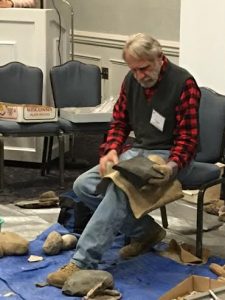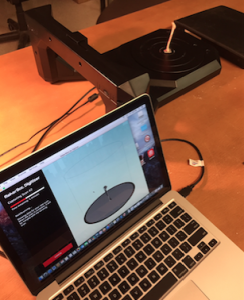By: Zaakiyah Cua
Hello everybody, if you haven’t met me yet, I’m Zaakiyah Cua and I’m a first-year graduate student in the Applied Archaeology program at IUP. I’m currently barreling through my second semester. The past seven months have been a whirlwind of gaining experiences and building relationships which will last me the rest of my life. I could go on forever about the many opportunities I have taken advantage of at IUP, the wonderful faculty, and my awesome cohort, but I will focus this post on my recent experience presenting at and attending the Mid Atlantic Archaeology Conference (MAAC).
During my first semester of graduate school I took Zooarchaeology taught by Dr. Sarah Neusius. One of the class assignments required me to identify and analyze a collection of about 1000 faunal remains from the Johnston Site, a Monongahela village site which IUP had previously excavated at for several seasons. The faunal collection I analyzed was then combined with collections analyzed by other classmates from the same site. We then each wrote an independent faunal report which analyzed the full collection (about 4000 bones). During the semester, Dr. Neusius suggested the possibility that the faunal analysis could be furthered and the results presented at a conference in the spring, either MAAC, SPA, or both. I approached Dr. Neusius at the end of the semester with another member of my cohort, Britney Elsbury-Orris, and expressed interest in working with the faunal collection further.
As the deadline for MAAC submission was quickly approaching and we were now through finals and gone for winter break, we quickly put together a poster presentation abstract and registered for MAAC memberships as well as attendance to the March conference. Our final product was a poster which discussed how faunal remains varied between the village plaza, domestic areas, and village stockade trenches. We found that faunal remains in the plaza were highly fragmented and highly burned while remains in the stockade trenches and domestic area contained more diverse burning and were less fragmented. Additionally, it appeared that the stockade was used to dispose of and burn refuse.
MAAC was in Virginia Beach during the last half of spring break. I had never been to Virginia Beach and I had never been to MAAC and I was really looking forward to the trip. In addition to Britney and myself, several other IUP archaeology students attended, as well as Dr. Chadwick who presented a paper. The conference did not disappoint. Not only was the conference extremely diverse in terms of research presented, the attendees and presenters were equally split between CRM archaeologists, students, and archaeology professors or university affiliated faculty. Additionally, the MAAC Student Committee scheduled several events throughout the weekend. Some of these events included a flint knapping workshop, a raffle and social mixer, resume reviews, and other social events.
MAAC also offers student scholarships which are provided by sponsors. These scholarships cover conference registration for students presenting and attending the meeting. Volunteering at the registration booth also waives the registration fee. I volunteered and thought it was well worth it as I met many people and networked during the three hours I was at the table.
Overall, the conference was a success. Although there were a few hiccups along the way, our poster turned out well and we received positive feedback regarding our research. I would highly recommend students attend the MAAC meeting in the future. If possible, I recommend presenting either a poster or paper at the conference. Single authored submissions can enter the paper and poster competitions. There are also opportunities for students to become involve with the MAAC Student Committee as a student representative or other officer position. This is a wonderful way to meet other students, become involved, and represent IUP at MAAC.




